The problem with a blog post about injury prevention for runners is that runners usually don't have a strong interest in preventing injury until they get one. Collectively, we tend to ignore stretching, strength training, mobility, and technique until the lack of it causes a problem. If you ignore these factors over time, they will inevitably create an issue.
Once you get the injury, it's too late. An injury forces you to take a break from running, replacing miles with rehab exercises. Runners are a stubborn bunch, often ignoring the early warning signs of injury or overtraining in favor of continued training.
Get in front of it. Want to run for a lifetime, injury-free? I can help you with the tools to prevent injury so that you can avoid being a running statistic. 65-80% of runners have some form of pain or injury in any given year.
If you run smarter, program intelligently, and spend some of your allotted workout time to strengthening, mobility, and technique, you can help reduce the chance of an injury.
It's not easy. It sometimes means running less, strengthening more, and resting more, which runners don't like to hear.
Programming For Injury Prevention
10% rule for injury prevention
Most injuries occur from too much too soon. Joints and ligaments don't have a chance to adapt to the increase in volume—a consistent, slow-building of milage is best for injury prevention.
The 10% rule states never add more than 10% to your weekly mileage each week. If you are running ten miles a week, it's safe to add one mile the next week. If you jump from ten miles to 15 miles, you are risking injury.
While it is a good rule of thumb, it's not full-proof. Individual runners have different tolerances. A 10% jump in mileage may be too much for a brand new runner, and experienced runners with great genetics may be able to increase more.
Listen to your body. If a 10% increase in mileage a week leads to prolonged soreness, aches, pains, or dread of running, it's likely too much. If you feel great, then proceed. Always adjust based on how your body responds to training. There isn't a one-size-fits-all training problem, why it's essential to learn how to tune-in your body's feedback and adjust accordingly.
The ratio of what you are doing compared to what you are used to doing
Another way to look at programming is to compare your current workload against what you are used to doing.
Consistently do less work than you are accustomed to and your injury risk is low but you risk detraining.
If you usually run three miles a day, three days a week, and your work decreases to three miles a day, two days a week, you will lose some fitness. Your body adapts and changes based on the stress you place upon it.
1:1 ratio. Always do the same work and plateau.
If you usually run 20 miles a week at a nine-minute per mile pace, you will plateau at that level. Your body won't improve unless you give it a reason to change. You must train to run farther or faster to continue to see improvements. Injury risk is low, but improvements may stall.
Do too much work and risk injury
If your routine is to run 20 miles a week, and you start running 30 miles per week, it likely will be too much additional stress on your body and lead to injury.
The key is to do the right amount, not too much, not too little. A small increase in volume (weekly mileage) gives the best results with the least risk of injury. As a coach, I'd lean towards increasing miles too slowly, rather than too quickly.
How do you know when you trained too much? Look for signs of overtraining.
Aches, pains, or muscle soreness that lingers longer than usual. Muscle soreness is a sure sign you overdid it. It happens normally at the beginning of a program, but if it is prolonged, it is a sign that you are overtraining. Muscle soreness should never be the goal of a program.
Elevated resting heart-rate
A sustained decrease in performance
"Heavy" legs
Trouble sleeping or staying asleep despite feeling exhausted
Depending on caffeine to give you the energy to get through the day
A weakened immune system, getting sick more often
If you experience one or more of the above symptoms, this is your body giving you feedback. Take an extra rest day (or three) and see how you feel.
Never increase volume (miles) and intensity (speed or difficulty) in the same week.
Marathon training plans sometimes ignore this rule, and the long run and speed work increase in the same week, usually do to a shortened training cycle. This increased your injury risk.
Increase volume, allow adaptation, then increase intensity.
A training plan to increase endurance and speed should only increase mileage every other week.
For example:
week one: long-run eight miles
week two long-run eight miles, speed intervals (if part of the program)
week three: long-run nine miles, same speed intervals as last week
four lone run nine miles, increase the intensity of speed intervals
This plan is the safest way to build both endurance and speed in the same running plan, but it takes longer, so most runners skip this rule and risk injury.
Back off LONG RUN Volume Every Fourth Week During Marathon Training
As you build mileage for marathon training, as the miles increase, it may become more challenging for your body to recover from the additional stress. You can allow additional time for recovery by backing off the long run miles every fourth week. This is often ignored in favor of a shorter marathon training cycle, but the break from volume every fourth week lowers your injury risk.
For example:
week one: long-run eight miles
week two: long-run nine miles
week three: long-run 10 miles
week four: long-run six miles or one hour
week five: long-run 11 miles
RPE instead of pace
Your pace on any given day is dependent on many factors: weather, hydration, nutrition, life stress, sleep. Have you ever run in the summer heat, or after a poor night's sleep and couldn't get your pace within a minute of your usual speed? Pushing for a specific pace without taking into consideration other factors could lead to injury. Run according to feel to reduce the chance of injury.
The Talk Test | RPE Chart
The talk test can determine your RPE.
RPE:1 No effort. You are probably sitting.
RPE:2-3 Light effort. Breathing is effortless. You may be walking at a leisurely pace.
RPE: 4-6 Moderate effort. You are working a little harder, maybe a jog, but you can carry on a full conversation at this pace without gasping for air between words or sentences. This effort is called conversational pace and should be the baseline for most of your runs during the week.
RPE: 7-8 Hard effort. You can speak a sentence or two at a time before having to take a gasp of breath.
RPE: 9 Tough effort. You can get out a word or two, but breathing is labored, and talking is challenging. You'd rather not. If you could get a word out, it would only be one at a time, and likely a swear word.
RPE: 10 Maximum effort. You are entirely out of breath and unable to talk. You would only be able to hold this pace for a short time, like in a 100-meter interval.
My advice is rather than aiming for a specific speed, run by effort. I love the RPE chart and breath test to determine perceived exertion. How hard you feel you are working is likely more meaningful data than a number on your GPS watch. Pushing to meet an arbitrary pace that your body isn’t ready for can lead to injury.
How to tell if you’re in a bad relationship with your GPS watch.
Strength Training FOR INJURY PREVENTION
Why do runners need to strength train?
Build structural integrity
You wouldn't build a house without first building a solid foundation. Stability exercises are essential for injury-free running.
Avoid or minimize muscle loss than can occur when running long distances.
When you run, your body adapts so that running becomes more comfortable and efficient. It's the reason that the first time you ever attempted to run around the block, you were huffing and puffing and were sore for two days, and now, with training, you can run a half marathon while chatting with your running partner.
When you run, your body sheds weight (both fat and muscle) so that you can run more efficiently. We all cheer for fat loss, but it's essential to preserve your muscle tissue for optimal body composition and a faster metabolism.
Muscle burns more calories at rest than fat; it's in any runner's best interest for performance, aesthetics, and injury prevention to preserve muscle mass. It doesn't mean you want to build big muscles, only to maintain a level of strength and muscle to reduce injury chances, optimize performance and body composition.
Strength training is your first line of defense against injuries
Muscles stabilize the joints. Prevent joint injuries with strong muscles.
Build strength and stability in all planes of motion. When you run, you move in one plane of motion, called the Sagittal plane—forward movement (and technically, backward).
If you don't intentionally strengthen the muscles used in the frontal plane (lateral or side-to-side movements) and the transverse plane (rotational moves) you can develop muscle imbalances that can lead to injuries. Don’t let weak muscles be a limiting factor in your training.
Learn more about training the Glute Medius in this blog post: Why runners need to strengthen the Glute Medius, the middle child of the Glute family. The Glute med is responsible for keeping your pelvis steady. A weak Glute Medius leads to muscle compensations, imbalances, and can cause injury. Exercises in the frontal plane, such as side lunges, side squats, curtsy squats, hip abduction, and step ups, strengthen this muscle
Build single hip and leg strength and balance
When you run you are balancing on one leg at a time for the duration of your work out. Improving your balance and building unilateral (single-leg) strength will directly improve your running performance. Start with the body weight variations as shown and progress to adding weight.
Mobilize hips
Tight and immobile hips can lead to muscle compensations (incorrect muscles taking over for weak ones) that can lead to injuries. Hip strengthening and mobilizing exercises are essential for all runners who want to avoid injuries.
I specifically called out hips because it is common for runners to have tight and immobile hips, but it’s important for runners to work on releasing any tight muscles, most commonly the inner thighs, calves, Quadriceps, and lats. Frequent foam rolling can help mobilize overactive muscles to improve mobility before a run or to promote recovery and minimize muscle soreness after a run.
Frequency matters. Work on overactive and tight muscles consistently.
Better foam rolling techniques for improved running performance and injury prevention
Build a strong core
Your core is everything above your thighs and below your chest, 360 degrees. Most people think of core training as crunches to get six-pack abs, but you have to expand your mindset to run stronger. A strong back, sides, Glutes, and abs will all work together to improve running performance. A strong core improves posture, which is essential during long runs. A weak back or inefficient Glutes will tire out on a long training run, and you'll sacrifice form, efficiency, and increase injury risk.
Here is a blog post with plank variations that will help you build a strong core.
Sports performance
Sure, strength training is essential for injury-prevention, but don't overlook that getting stronger improves performance, which is what most runners want.
Strength training improves posture for better running form and efficiency. Efficient running is fast running.
When we combine strength training with proper running form, appropriate speed work, and the development of the cardiovascular system, it makes us faster and more enduring!
Traditional gym exercises like squats, deadlifts, and rows will improve your running performance and build armor against injuries.
How to Incorporate strength training into running programming
Hard days hard, easy days easy, full recovery days.
Instead of doing speed work one day, heavy squats the next, then the long run after that, it's better to combine some of those hard days.
Can you do speed intervals and weight lifting on the same day and rest the next? Alternate between hard and easy days and take full rest days as needed. If every day is a hard workout, whether it is high-intensity strength, speed work, or a long run, your body likely won't be able to recover from that much work. Keep easy days easy and hard days hard.
Build with stabilization exercises first
Take three to four weeks building stabilization before adding load. It's tempting to jump right into heavy squats and deadlifts, but your tendons and joints need time to adapt to heavier weights. Start with stabilization exercises such as planks, bodyweight exercises, and balance exercises, for a couple of weeks before adding load. This strategy will also not interfere with your running program.
Most runners will benefit from two full days of strength training a week, but don't get caught in an all-or-nothing mindset. I'd rather see you perform 15 minutes of strengthening exercises before or after an easy run a day, than nothing at all.
Overcoming the all-or-nothing mindset.
Alternate between running goals and strength goals
When running volume is high, such as in marathon training, you will need to lower the intensity of weights. Generally speaking, it is better to stick to stability, mobility, and lower intensity strength exercises in a strength maintenance phase with high-volume running.
You can lift heavy during a marathon cycle, but as your race day approaches with high mileage it becomes more difficult to recover from high-intensity strength workouts and high volume running. Something usually has to give.
In the offseason, when mileage should naturally decrease, it’s a great time to increase intensity (weights) or volume of strength training. In other words, during certain times of the year, focus more on building strength, and other times focus on building endurance, rather than trying to do it all, all the time. You'll get better results with each by alternating focus between running goals and strength training goals throughout the year. Get as strong as you can when you’re not training for a race.
Progressive overload
Slowly increase the demand on the body to progress. Just like I mentioned in running programming, if you do the same exercises with the equal weights over and over, your body will adapt, and your strength training progress will stall.
You must always look for ways to continually, but slowly, increase the difficultly of the exercises as your body adapts. You can progress by performing harder variations of the exercises by increasing weights, reps, sets, or reducing rest periods.
The exercises I shared in this post are mostly bodyweight exercises, and a great place to begin, but you can’t stop there. As you get stronger, add weights to the exercises to increase the challenge.
After two to three weeks, most people will be ready to make changes to the difficulty or volume of their training. Keep in mind that progression is the ultimate goal; always look for ways to get better, but be mindful not to change too many variables at once. Slow and steady progress yields the best results—don't rush it.
Minimum effective dose
Minimum effort dose does not mean the minimum, only the minimum needed to see progress. How much work do you need to do to see improvement? Doing more than required brings diminishing returns and increased injury risk.
More is not always better—experiment by slowing increasing endurance or intensity, but never at the same time, remember. If you see improvements from your training, then continue that path. If you stop seeing improvements, it may be that too much work likely leads to worse results, and you may benefit from resting more. Use the guidelines above for signs of overtraining, and listen to your body’s feedback.
Free 5-day strength training for runners challenge
Recovery to prevent injuries
We get stronger, faster, and more fit during the rest period after the workout, not during the workout itself. If you don't allow recovery after workouts, you could be sacrificing performance. Skipping rest can inhibit progress and lead to injury.
Recovery needs are individual, dependent on many factors including genetics, age, experience, injury history, daily stress levels, sleep, and nutrition, to name a few. Most people need at least one full rest day per week. Older and less experienced athletes likely need more.
Sleep
Sleep is one of the most overlooked performance enhancers. A lot of the body’s recovery processes happen during sleep. If you sacrifice sleep, you are likely sacrificing recovery and performance gains. Remember, if you don’t recover, you don’t improve, and you are increasing the risk of injury.
Stress Management
Life stress can inhibit recovery, which stalls progress. During high-stress times in life, it's best to limit exercise intensity. Keep in mind that poor and inadequate nutrition can be a stress on the body, as well as eating too few calories.
Explore ways to manage stress in your life in a healthy way, whether it be meditation, prayer, long talks with friends, reading, resting, or whatever recharges your batteries. Your lifestyle will affect your running performance and recovery.
It’s not a marathon; It’s a lifestyle.
Stress is not inherently bad. You stress your body with exercise, allow it to recover, then it gets stronger. Stress is only a problem when you don't allow the recovery, and the stress levels never return to a healthy level. If you're dealing with life stress (like a problematic situation at home, money problems, career worries), it affects your body's ability to recover from exercise. If you are not adequately recovering, it can lead to injuries. Balance your life stress with workout stress for the best results.
Nutrition
Adequate nutrition aids in recovery from exercise. Lack of nutrients or calories can be a factor in injury risk.
I spoke to Sarah Petty, a clinical nutritionist, regarding nutrition for runners and injury prevention, and she says, “Insufficient protein can slow tissue repair, leading to injury and reinjury. Under-fueling is a huge problem in performance sports that rely on maintaining a specific bodyweight for optimal body mechanics. Injuries and low bone density are associated with chronically insufficient calories.”
If you want to perform well and minimize injury risk, you need to eat food! Chronic dieters are increasing their injury risk.
Nutrition is highly individual, but a balanced diet of carbohydrates, protein, and healthy fats is ideal for most runners. The particular runner can determine which % of each macro-nutrient makes them look, feel, and perform their best. There is no one size fits all, but generally speaking:
Aim for minimally processed foods derived from nature, most of the time.
Follow the 80/20 rule for balance. 80% nutrient-rich foods that nourish the body, and 20% of foods that may not be the healthiest choice, but serves some other meaningful purpose in your life, such as bonding with friends, celebrating holidays or special occasions, or family traditions. Keep in mind that a healthy lifestyle is more than what you eat and how much you exercise, but your whole life, including the quality of your relationships, which is often formed and strengthened over food.
Eat adequate protein (and do resistance training) to avoid muscle loss that can occur from running long distances. National Academy of Sports Medicine targets this as .6 grams of protein for every pound of body weight for endurance athletes, Experiment with this, and find the right amount for you.
Eat carbs according to your goals. Choose whole-food healthy carbs like fruits, vegetables, potatoes, rice, and other one-ingredient carbs. Carbs are stored in your muscles and liver as glycogen to provide fuel for running.
Nutrient-rich foods help you recover from exercise and fuel your workouts. Choose foods that support your goals.
Poor nutrition choices and alcohol can be additional stress on your body and won’t provide the nutrients needed for recovery and optimal performance. It’s encouraged to have occasional indulgences, but the bulk of your nutrition should be in support of your goals
Movement quality
Inefficient running form and technique can lead to improper muscle recruitment and poor movement patterns. Your body will find a way to move forward with poor form, but with compensations. Muscle compensations (wrong muscles doing the work for undeveloped muscles) stemming from form or technique errors can lead to injuries over time. Spending time working on form and technique pays dividends over adding more miles to inefficient running.
Running form
Look straight ahead. If your running shoes come into view, you're looking the wrong way.
Stand tall with your shoulders down and back. Lean forward at the ankles, not the waist.
Hold shoulders over your hips. Don't bend at the waist, or allow your butt to fall behind (pun intended) your shoulders.
Swing your arms forward and back (do not cross over the front of the body).
Running technique
Your foot shoot land under your center of gravity, not out in front. A straight leg reaching ahead of your body is hard on the hips and increases injury risk.
Keep both legs bent all the time to avoid reaching with straight legs
Skim the surface with light steps. Running is when both feet are in the air. Aim for soft and quick steps.
It can be difficult to perceive your running form and technique during your run. I recommend filming yourself run in front of your camera lens in the landscape view to review your running form. Pay attention to:
Where is your foot landing?
Are your shoulders and hips in a straight line?
Is your arm swing forward and back only?
Are you looking ahead?
Are your shoulders down and back (or raised up towards your ears)?
Are both legs bent at all times?
Examine the footage in slow motion to see where you may need to make improvements and work on each point individually until you see results. It can be challenging to change form and technique when improper movement is ingrained after many years of running, but with consistent effort to improve, you can learn new healthy running habits to avoid injury.
Running Shoes
Often the pain stems from programming or technique errors
Other structural problems usually should be addressed with a medical professional if you are unable to resolve it on your own. I have had success with Airrosti in resolving hip and shoulder pain.
Wear shoes that are comfortable with room in the toe box, usually ½ to one full size bigger than street shoes, and replace about every 500 miles or until the tread and mid sole are visibly worn.
Poor running technique and programming errors are the primary causes of running injuries. When you add miles and speed to improper technique, you increase your chances of an injury. Shoes can't solve all your running injury problems and can potentially increase risk by disrupting running mechanics, and reduced ground perception. Instead of seeking a band-aid that may provide a temporary fix, work to correct the problem at the source.
If you apply these tools and resources to your run training program you will reduce the chance of injury to become a well-rounded athlete with better performance.
Are you proactive in your efforts to mitigate injury-risk? An injured runner can’t run, so it is in our best interest to take steps to prevent injuries before it’s too late!
Is there anything you read here that you will apply to your running program to help avoid injuries? I’d love to hear about it!
Questions? I’d love to help.


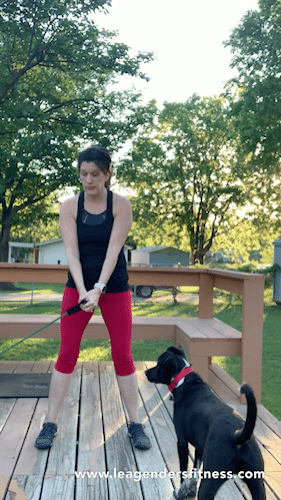
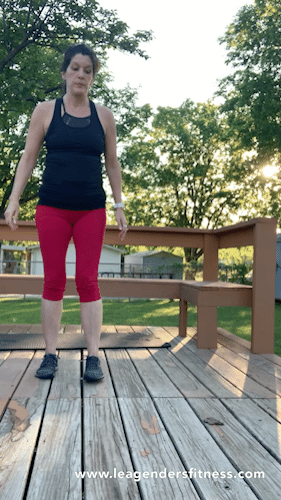
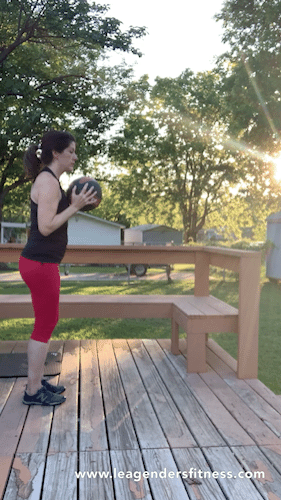

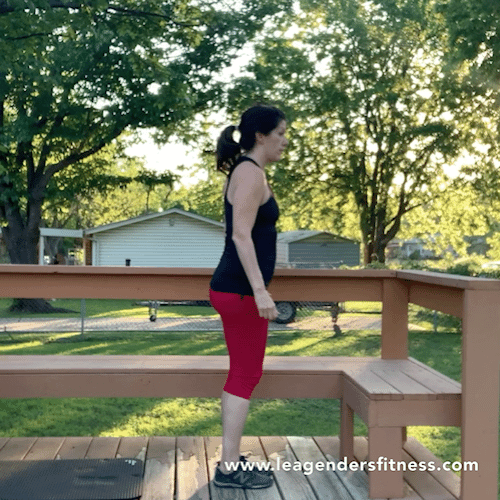
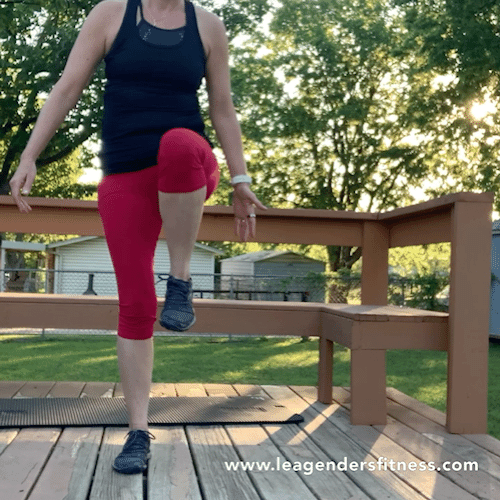

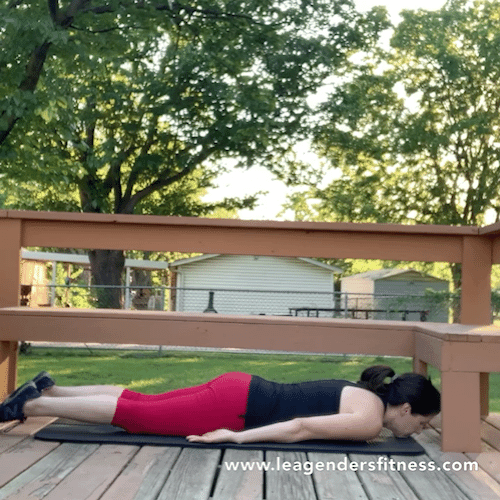
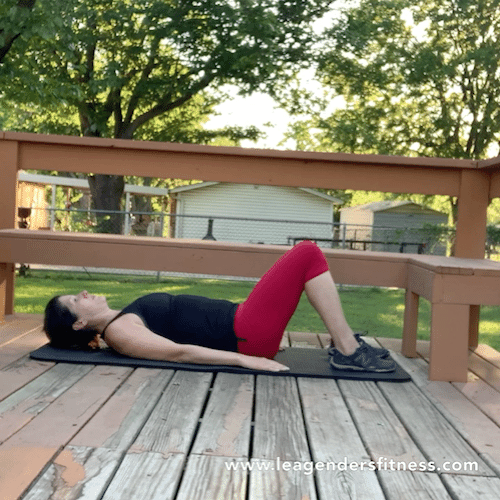
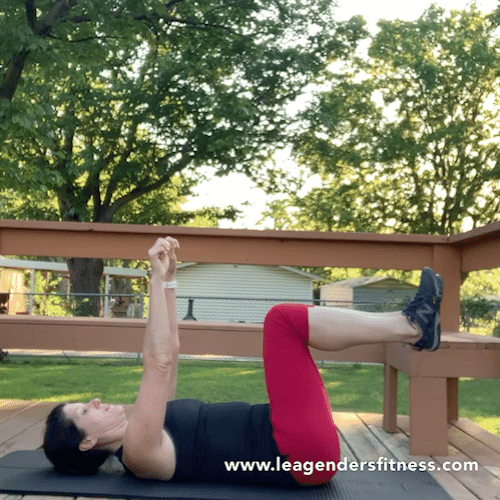













Much of what we experience as suffering is just the story we tell ourselves about a situation. Recently, this simple shift in perspective gave me the clarity to finally make a massive decision I have been putting off for years. It is time for a major update.